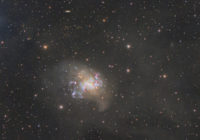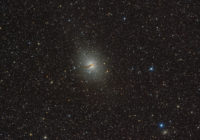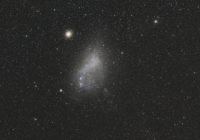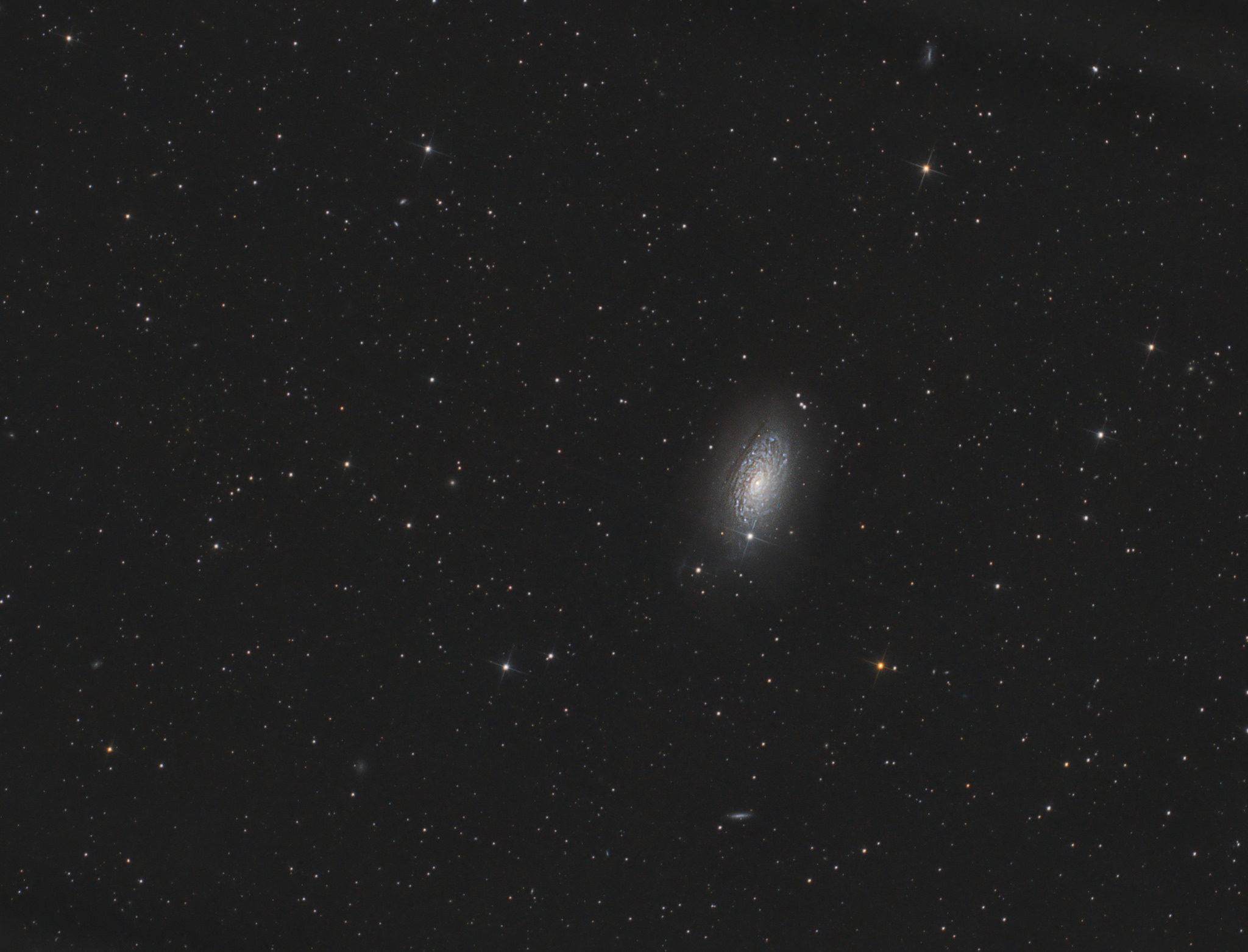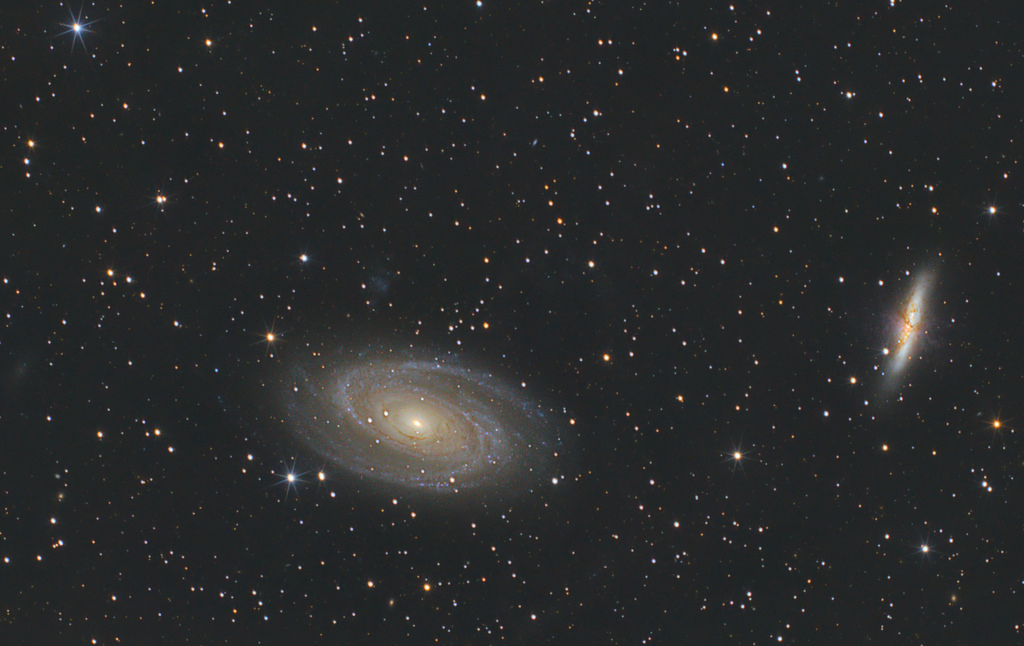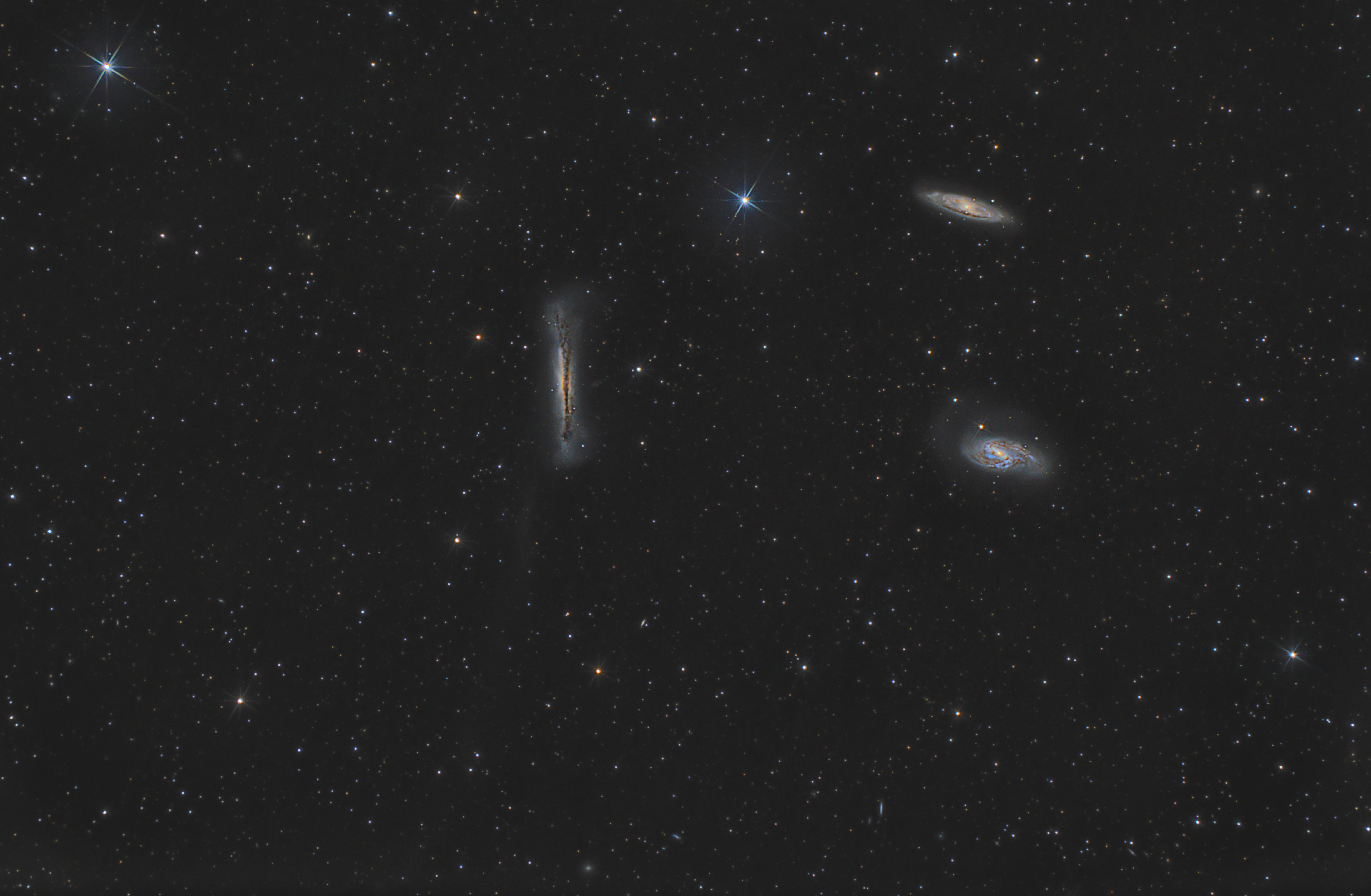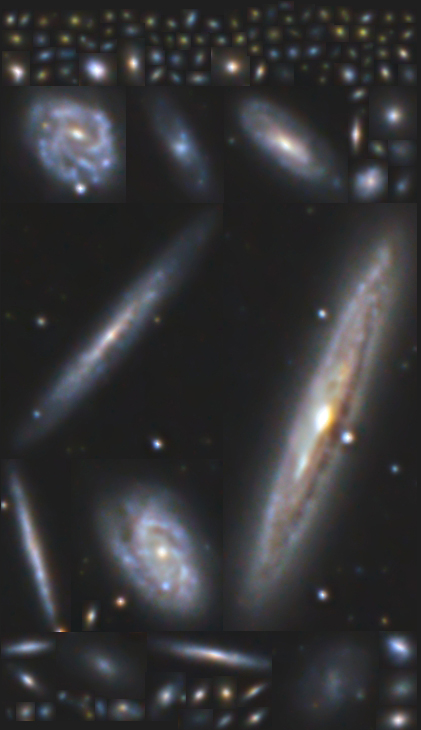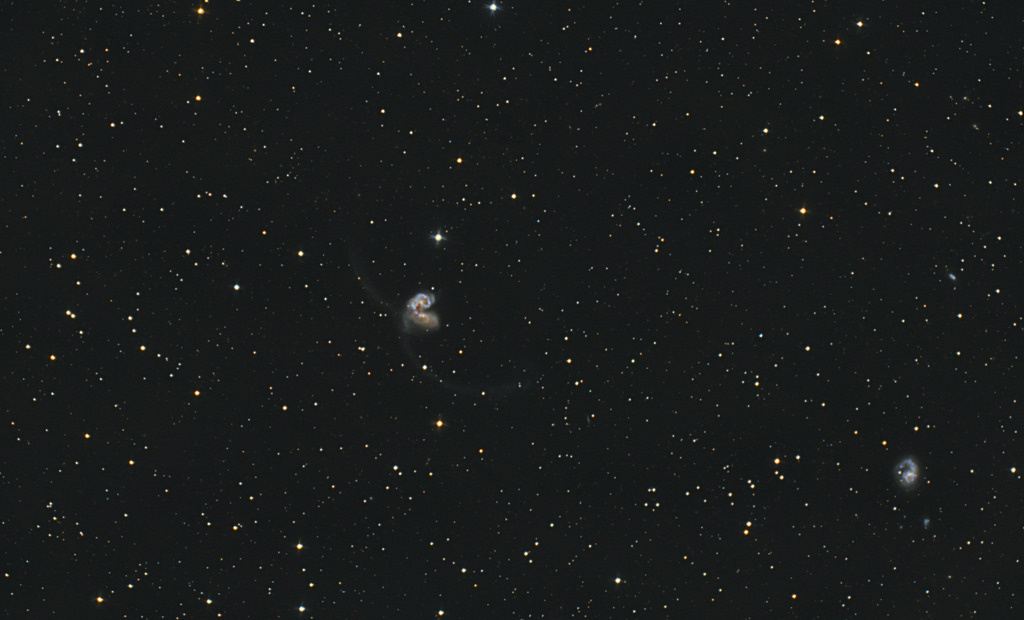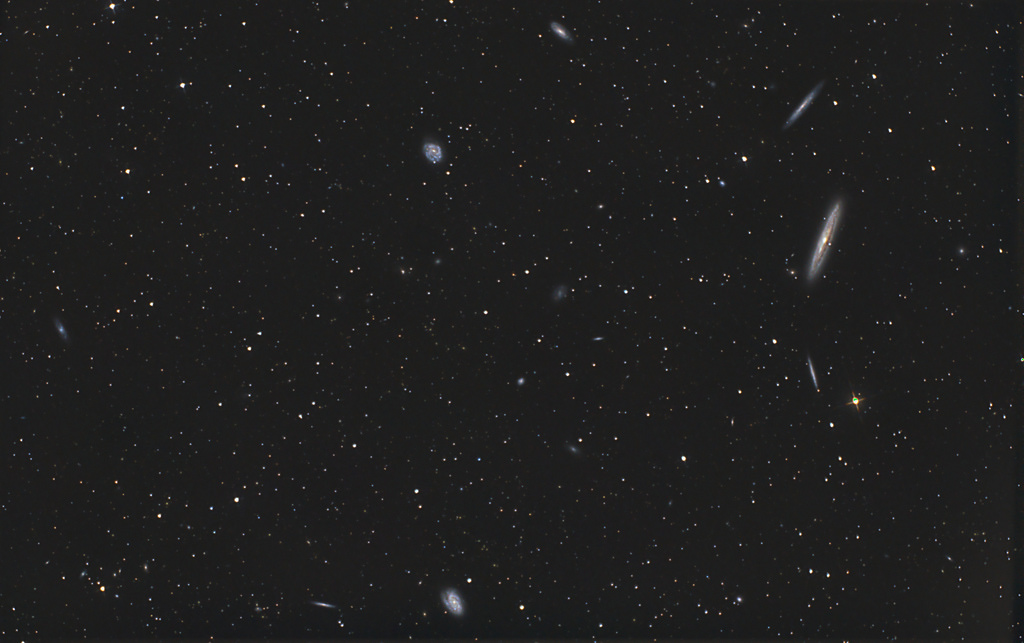Irregular galaxy NGC 1313 imaged from Namibia with DSLR Nikon D600 and D5100
Read MoreGalaxies
Barnard’s galaxy through Galactic Cirrus clouds
Barnard’s galaxy, NGC 6822, is a barred irregular galaxy in the constellation Sagittarius. It is part of the Local Group and is situated at a distance of approximately 1.6 million light-years away. In many pictures it seems quite a dull galaxy, but it has some remarkable star formation areas which seem to be almost perfect circles. Galactic Cirrus As you can see Barnard’s galaxy seems to be embedded in dust. This so called ‘galactic cirrus’…
Read MoreCentaurus A with Nikon D7000
As the 5th brightest galaxy in our skies, Centaurus A (NGC 5128) is a very popular target both visually as for astrophotography. The galaxy looks like a lenticular or elliptical (yes, there still seems to be debate about this) galaxy with a very distinct disturbed dust lane across. It’s a clear example of a ‘disturbed’ galaxy, one that is the result of two smaller galaxies merging in the past. When processing the image I noticed…
Read MoreThe Small Magellanic Cloud and Tuc 47
The Small Magellanic Cloud (SMC) is a dwarf galaxy near the Milky Way at a distance of around 200,000 light-years. Together with the LMC it can be clearly seen with the naked eye. The SMC is visually accompanied by 2 globular clusters. The biggest one is called Tuc47 and it is located 16,700 light years from us. It is in fact the second brightest globular cluster in the sky (after Omega Centauri). Unfortunately I only…
Read MoreM63 – The Sunflower galaxy
M63 – Introduction During my last astrotrip I focussed on testing out my new Nikon D600, trying to capture the tidal tail of the Leo Triplet and capturing the integrated flux nebula in M81 and M82. At the end of the last night I had one of these moments that you stand next to your scope and think; time to shoot something else, what can I capture? So in a real ad-hoc decision I thought…
Read MoreM81 and M82 with a dslr – trying to capture integrated flux nebula
M81 and M82 – introduction M81 together with M82 is probably one of the most popular galaxies both visually and as imaging object. Everyone starting out with this hobby will have a go at these galaxies in Ursa Major and rightfully so I would say. They are big, lot’s of detail and easy to find. For most camera’s the two galaxies form a very nice composition and field-of-view. This fov has more to offer than…
Read MoreLeo Triplet with a DSLR – The hunt for the Tidal Tail
Last weekend I was on an astrotrip to a nice spot in Germany with nice dark skies. The main goal of the weekend was to test all my new equipment and to see if imaging with the duo setup would work properly with the Lacerta MGEN controlling two camera’s. As a subject I chose the beautiful Leo Triplet, which is one of my favourite galaxy ‘groups. The three galaxies all show much detail and are…
Read MoreNGC 4216 and friends – galaxy composite image
Previously I shared the image I took of NGC 4216 and friends here. I absolutely love this field of view in the constellation of Virgo with it’s many galaxies. You can endlessly look at this image and keep discovering new ‘faint fuzzies’ in there. I decided to create a composite image consisting of the most obvious galaxies in this image. The image ended up with over 100 galaxies, and still more can be seen in…
Read MoreAntennae Galaxies – NGC 4038 and NGC 4039
Introduction I had high hopes up front about this subject. I just find it very beautiful and never quite understood why it got a nickname like the ‘antennae galaxies’, instead of something referring to the heart shape of the interacting galaxies. To me I just see a heart in the sky consisting of 2 entities ‘colliding’ with each other. It’s hard not to see the symbolic meaning this can obviously have. It was the first…
Read MoreNGC4216 and friends
Subject information NGC 4216 is spiral galaxy located not far from the center of the Virgo Cluster of galaxies, roughly 40 million light-years away. It’s seen nearly edge-on. Along with NGC4216 we can see many more striking galaxies in this field of view. Image acquisition details Date: 28/04/14 Location: La Palma Optics: TS 10″ Newton Mount: NEQ6 on fixed pier Camera: Unmodified Nikon D7000 used at ISO800 Guiding: Lacerta MGEN Exposure: 46 x 300 sec….
Read More